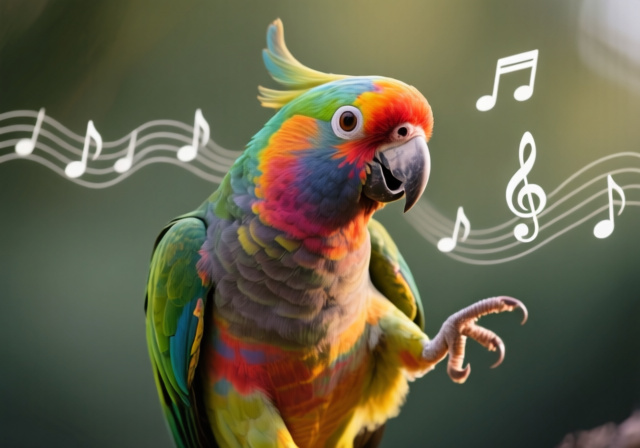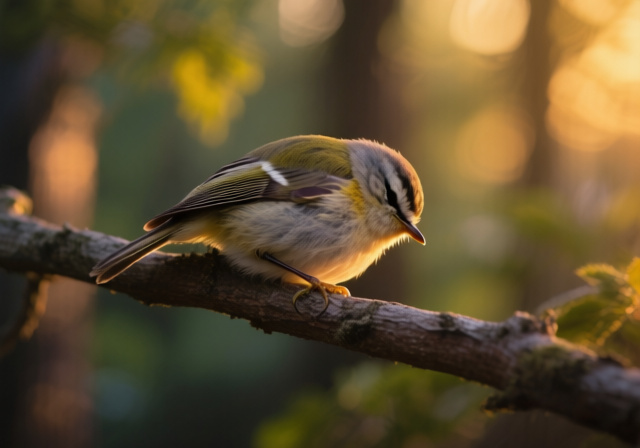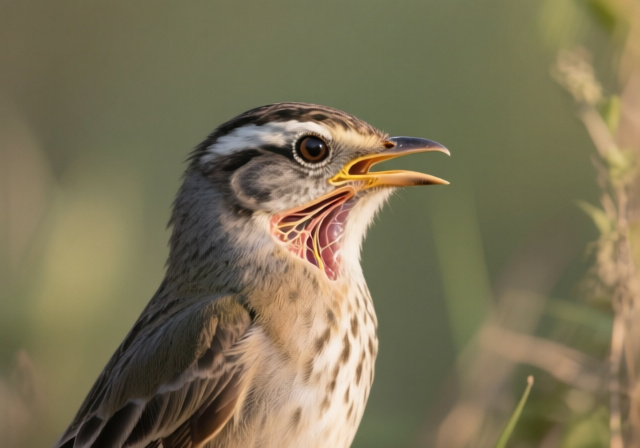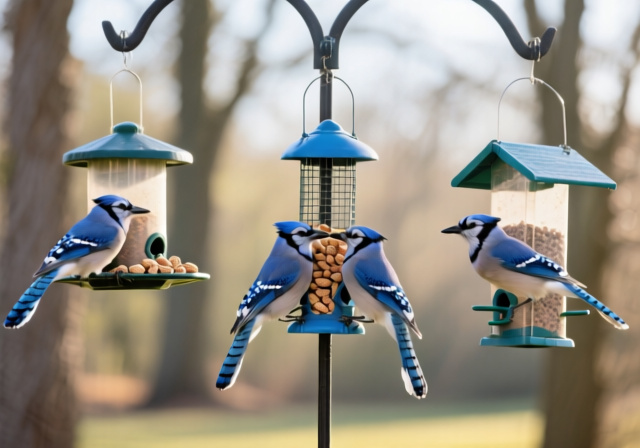



Have you ever spotted a bird perched on a branch, seemingly frozen in place overnight, and wondered how they manage to stay upright without falling? It’s one of nature’s most ingenious adaptations that allows our feathered friends to rest safely while remaining ready for instant action.
Yes, many birds sleep standing up using an automatic tendon mechanism in their feet that locks onto perches without muscular effort, combined with a specialized balance organ between their hips. This remarkable system works like a natural clamp that tightens when birds bend their legs, allowing them to sleep securely while maintaining the ability to escape instantly if threatened.
After spending hundreds of hours observing birds in their natural habitats, I’ve witnessed firsthand how these sleep adaptations work. From cardinals tucked away in dense thickets to flamingos balancing gracefully on one leg, birds have evolved some of the most sophisticated sleep mechanisms in the animal kingdom. As a wildlife photographer, I’ve learned that understanding these behaviors not only satisfies curiosity but also helps us become better observers of nature.
In this comprehensive guide, we’ll explore the fascinating world of avian sleep, from the anatomical marvels that keep birds perched safely to the extreme adaptations that allow some species to sleep while flying. You’ll discover why some birds sleep with one eye open, how baby birds sleep differently from adults, and what these behaviors tell us about evolution’s brilliant solutions to survival challenges.
The secret to birds sleeping while standing lies in one of nature’s most elegant mechanical systems: the flexor tendon mechanism. When birds land on a branch and bend their legs, these specialized tendons automatically tighten around their toes, creating a vice-like grip that requires no muscular effort to maintain. It’s like having built-in clamps that engage the moment a bird settles down for the night.
This incredible system works through a simple pulley mechanism. The flexor tendons run from the bird’s toes up through the leg and behind the ankle. When the bird bends its leg to perch, these tendons pull tight, forcing the toes to curl around the branch. The harder the bird bends, the tighter the grip becomes. This means that even a sleeping bird, with completely relaxed muscles, remains securely attached to its perch. The weight of the bird actually helps maintain the grip rather than loosen it.
Flexor Tendons: Specialized tendons in bird legs that automatically tighten when the leg bends, creating a secure grip without requiring muscular effort.
The hallux, or backward-facing toe, plays a crucial role in this system. Acting like a thumb, it opposes the other three toes to create a pincer-like grip around branches. This arrangement gives birds an incredibly secure hold, allowing even the smallest songbirds to withstand strong winds while sleeping. The hallux’s position and strength are why birds can sleep on branches as thin as pencils without losing their balance.
What makes this mechanism even more remarkable is that it’s entirely involuntary. Birds don’t consciously decide to “lock” their feet – it happens automatically when they perch. This means they can fall asleep immediately without worrying about maintaining their grip. When they wake up, simply straightening their legs releases the tension, allowing them to take flight instantly if danger approaches.
While standing sleep is impressive, birds have evolved an incredible variety of sleep positions that might surprise you. Different species have adapted unique sleeping strategies based on their habitats, body structures, and survival needs. From floating on water to lying face down, the diversity of avian sleep positions reveals nature’s creative problem-solving at its finest.
| Sleep Position | Bird Examples | Purpose & Benefits |
|---|---|---|
| Standing on one leg | Flamingos, storks, songbirds | Heat conservation, energy saving |
| Floating on water | Ducks, geese, swans, loons | Safety from land predators, rest during migration |
| Lying on stomach | Owl chicks, some adult owls | Comfort, warmth, developmental needs |
| Hanging upside down | Hummingbirds (occasionally) | Torpor recovery, energy conservation |
| Buried in snow | Grouse, ptarmigan | Insulation, camouflage from predators |
| Crouching on ground | Ostriches, emus, shorebirds | Rest during long flights, ground nesting behavior |
Waterfowl have developed perhaps the most comfortable sleeping arrangement. Ducks, geese, and swans can sleep while floating on water, often tucking one leg into their feathers to conserve body heat. This position keeps them safe from most land predators while allowing them to rest during long migrations. Some species even arrange themselves in protective circles, with sentries keeping watch while others sleep.
The most heartwarming sleep position belongs to young owls. Unlike their perching adult counterparts, owl chicks lie face down on their stomachs, heads turned to the side, much like human babies. This position helps them stay warm and develop properly. Adult owls, however, adopt the more typical perching posture, though they’re known for their ability to rotate their heads nearly 270 degrees while sleeping, giving them an almost 360-degree field of view without moving their bodies.
Perhaps the most fascinating aspect of bird sleep is unihemispheric slow-wave sleep (USWS) – the ability to sleep with one eye open and one half of the brain awake. This incredible adaptation allows birds to rest while remaining vigilant for predators. It’s like having a security system that never shuts down completely.
Unihemispheric Slow-Wave Sleep (USWS): A sleep state where one brain hemisphere sleeps while the other remains awake and alert, allowing the animal to rest while monitoring surroundings.
During USWS, the eye connected to the awake hemisphere stays open, continuously scanning for threats. The sleeping hemisphere undergoes essential restorative processes, while the awake hemisphere maintains basic awareness and can trigger immediate escape responses if danger is detected. Birds can control which hemisphere sleeps, often alternating throughout the night to ensure both sides get adequate rest.
This ability explains why ducks sleeping in a row often have those on the ends sleeping with one eye open, facing outward, while those in the middle sleep with both eyes closed. The outer ducks are literally keeping watch for the entire group. Studies have shown that birds can increase the amount of USWS they get in dangerous situations, trading deeper sleep for safety.
What’s truly remarkable is that birds don’t just use USWS for predator avoidance. Migrating birds like frigatebirds and swifts use this mechanism to sleep while flying, essentially taking power naps mid-air. They can sleep for seconds or minutes at a time while maintaining flight patterns and navigation. This ability allows them to stay airborne for months during migrations, a feat that continues to astound researchers.
Bird sleep adaptations reach their most extreme in species that push the boundaries of what’s possible. The natural world has produced some truly unbelievable sleep behaviors that challenge our understanding of rest and survival.
Alpine swifts hold the record for the most extreme sleep behavior. These incredible birds can stay airborne for up to 10 months at a time, eating, mating, and sleeping all while flying. Research using tiny accelerometers revealed that swifts sleep in short bursts, likely using USWS to maintain flight patterns. They essentially live their entire lives except for breeding periods in the air.
Frigatebirds, oceanic travelers that can fly for weeks without landing, have similarly amazing sleep abilities. GPS tracking showed that these birds sleep while soaring in rising air currents, typically for just a few seconds at a time but accumulating several hours of sleep per day. They’ve evolved to sleep in both hemispheres simultaneously during brief periods, then immediately return to unihemispheric sleep when needing to navigate.
✅ Amazing Fact: The common swift can fly continuously for 10 months without landing, sleeping, eating, and mating entirely in the air.
At the other extreme, hummingbirds enter a state called torpor to survive cold nights when food is scarce. During torpor, their heart rate drops from over 1,000 beats per minute to as few as 50, and their body temperature can fall nearly to match the surrounding air. They appear dead to the touch, but this extreme energy conservation allows them to survive until morning when they can feed again. Some hummingbirds have been known to hang upside down during torpor, leading to myths about them dying in this position.
Arctic birds like ptarmigan and grouse have developed yet another strategy: they burrow into snow banks to sleep. The snow provides excellent insulation, keeping them warm despite temperatures that can drop to -40°F. Their white winter plumage provides perfect camouflage, making them nearly invisible to predators like foxes and owls that might hunt by detecting movement or silhouettes against the snow.
As someone who has spent countless hours watching birds, I can tell you that observing their sleep behaviors is both challenging and rewarding. To successfully witness birds sleeping, you need the right equipment and techniques that won’t disturb these sensitive periods.
For dawn and dusk observation when many birds are settling down or waking up, having good low-light optics is essential. Many songbirds choose their sleeping spots just before sunset, and observing this selection process can reveal fascinating insights about their safety strategies. The best low-light binoculars can help you spot birds in dim conditions without using flashlights that might startle them.
When choosing optics for bird behavior observation, consider what you’ll be watching most often. Binoculars versus monoculars is an important decision – binoculars provide better depth perception for judging distances and branch sizes, while monoculars are lighter for extended observation periods. For serious bird sleep study, I recommend starting with quality 8×32 binoculars which offer an excellent balance of magnification and field of view.
The best times to observe sleeping birds are early morning before they fully wake and late afternoon as they’re settling in. During these transition periods, birds are more likely to engage in pre-sleep and waking behaviors like stretching, feather fluffing, and head scratching. These are often the most active and interesting times to watch, as birds are preparing for or recovering from sleep.
For observing birds in trees or at a distance, a spotting scope versus binoculars comparison becomes relevant. Spotting scopes offer higher magnification for detailed observation of specific behaviors, while binoculars provide a wider field of view for finding birds initially. Many serious bird watchers use both – binoculars for locating and scopes for detailed study.
Remember that ethical observation is crucial. Never use flash photography, playback calls, or other disruptive methods around sleeping birds. These animals need their rest to survive, and disturbing them can have serious consequences. Always maintain a respectful distance and use your angled vs straight spotting scope to observe from a comfortable distance that doesn’t stress the birds.
The evolution of bird sleep mechanisms tells a story of constant adaptation to survive in a world full of predators and challenges. Each sleep strategy represents a solution to specific survival pressures that have shaped bird behavior over millions of years.
The primary driver for standing sleep was likely predator avoidance. Ground-dwelling ancestors that could sleep elevated off the ground had a significant survival advantage. Over time, this led to the development of the perching mechanism, allowing birds to sleep in places inaccessible to many predators. The balance organ between birds’ hips, a unique adaptation not found in other animals, provided additional stability that made standing sleep even more secure.
Energy conservation played an equally important role in sleep evolution. By developing sleep mechanisms that require minimal muscular effort, birds conserve precious energy that can be used for foraging, migration, and reproduction. The automatic grip system means birds don’t burn calories maintaining their hold while sleeping, a crucial advantage for small birds with high metabolisms.
The evolution of unihemispheric sleep represents perhaps the most elegant compromise between rest and vigilance. Birds that could sleep while remaining partially alert survived better in environments with constant predator pressure. This adaptation eventually allowed some species to take it further, sleeping while flying or swimming in situations where stopping to rest would mean certain death.
Climate and habitat also influenced sleep adaptations. Birds in cold regions developed strategies like communal roosting, where dozens or even hundreds of birds sleep together to share body heat. Others evolved seasonal variations, with some species entering deeper, longer sleep periods during winter when food is scarce and activity levels naturally decrease.
Yes, some birds do lay down to sleep. Owl chicks and some adult owls sleep lying on their stomachs with their heads turned to the side. Large birds like ostriches and emus also lie down to sleep. However, most perching birds sleep standing up using their automatic grip mechanism.
Signs of a sleeping bird include a tucked head (often under a wing), fluffed feathers for warmth, closed eyes or one eye closed (in unihemispheric sleep), reduced movement, and slower breathing. Some birds may also stand on one leg while sleeping. They’ll typically startle easily if disturbed.
Birds have diverse sleeping positions: most perching birds sleep standing up, often on one leg; waterfowl sleep floating on water; owls can sleep lying down; some birds sleep in burrows or cavities; hummingbirds may enter torpor and occasionally hang upside down; and Arctic birds sometimes sleep buried in snow.
Birds like swifts and frigatebirds sleep while flying using unihemispheric slow-wave sleep, where one brain hemisphere sleeps while the other remains alert. They sleep in short bursts lasting seconds to minutes, often while soaring in rising air currents. This allows them to rest during migrations that can last months.
Yes, birds can sleep with their eyes open during unihemispheric sleep. The eye connected to the awake hemisphere remains open and alert for predators, while the other eye closes. Some birds can control which side of their brain sleeps, alternating throughout the night.
Sleep duration varies greatly among species. Small songbirds typically sleep 8-12 hours at night, while diurnal birds of prey may sleep 10-14 hours. Nocturnal birds like owls sleep during the day. Some migratory birds can function on very little sleep during long flights, sleeping in short bursts totaling just a few hours per day.
Most birds do not sleep in nests except during breeding season when raising young. Nests are primarily for eggs and chicks. Adult birds usually sleep on branches, in cavities, or other protected locations. Some species like swallows may return to nest sites year-round for roosting.
Birds stand on one leg primarily to conserve body heat. By tucking one leg into their feathers, they reduce heat loss through the unfeathered leg. This position also helps them balance while sleeping and may reduce muscle fatigue. The flexor tendon mechanism keeps them securely perched even on one leg.
Bird sleep represents one of evolution’s most elegant solutions to the challenge of resting in a dangerous world. From the automatic grip that keeps songbirds safely perched to the half-brain sleep that allows ducks to rest while watching for predators, these adaptations showcase nature’s incredible ingenuity.
As we continue to study and understand these remarkable behaviors, we gain not only scientific knowledge but also a deeper appreciation for the complexity and resilience of life. The next time you spot a bird seemingly frozen on a branch at dusk, take a moment to appreciate the sophisticated biological machinery at work, allowing that small creature to rest safely while staying ready for whatever the night may bring.
For those interested in observing these behaviors firsthand, investing in quality bird watching optics can open up a whole new world of natural wonders. Understanding what do numbers on binoculars mean will help you choose the right equipment for your birding adventures. Whether you’re a casual observer or a dedicated ornithologist, the world of bird sleep offers endless opportunities for discovery and wonder.







